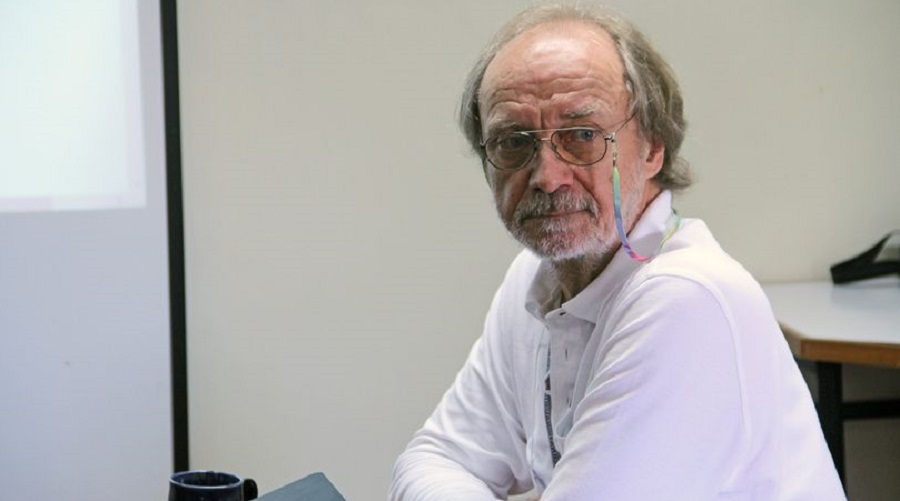
Rainer Froese. Photo by the Blue Marine Foundation, Facebook.
By Rainer Froese
I thought the background story of our recent publication ‘New developments in the analysis of catch time series as the basis for fish stock assessments: The CMSY++ method‘ may be of interest to young scientists.
It all started in 2011 when I was visiting Daniel Pauly at the University of British Columbia in Vancouver. Insisting ‘Rainer, you must see this’, he dragged me into an R-course run by Steve Martell. As an example of nice and interactive graphics, Steve showed that key parameters of a simple population growth function (productivity r and maximum size k) could be estimated from a time series of catches by making broad assumptions about possible wide ranges of r and k, and then using a Monte Carlo approach to filter out combinations of r and k that, given the catches, would either crash the fish stock or let it overshoot maximum population size. That strongly narrowed down the ‘viable’ combinations of r-k, which then formed a triangle in r-k space from which plausible estimates of r, k and maximum sustainable catch (MSY) could be derived. I was duly impressed.
Over the subsequent two years, I pestered Steve to get this published so that I could use it in fish stock assessment of data-poor stocks. In the end, we agreed that I would write the paper and he would be the first author and that led to ‘Martell and Froese, 2013. A simple method for estimating MSY from catch and resilience.’
Subsequently, I learned to program in R and with a bunch of colleagues and several workshops, intermediate papers and 185 citations/applications of the original paper (over 400 in Google Scholar), we developed a version that uses a powerful Bayesian approach for parameter estimation with an AI approach to estimate priors, which is the paper that came out now.
The story could end here, but there is more to it: the new simple two-parameter (r and k) method was seen as a threat by colleagues who had spent their careers on the (over)development of sophisticated data-hungry age-structured models with up to 40 required parameters, many of which are unknown and guessed.
Journal editors rely on these colleagues as reviewers for method papers such as ours, and these (sometimes openly hostile) reviewers forced us to address every possible issue that they could think of, far beyond any reasonable tests that their favoured ‘gold-standard’ models had ever been subjected to. We did many of these requests and answered all comments by the reviewers, resulting in a more complicated and much longer paper than we had originally submitted, and a response-to-reviewers document that was over 12 pages long. But that was to no avail, the reviewers were never satisfied and the paper was subsequently rejected in three well-known journals.
We then asked the editor of a lesser-known journal whether he would accept the previous comments of reviewers as evidence and just have ‘neutral’ reviewers decide whether we answered the expressed concerns satisfactorily. The editor agreed, the new reviewers found our answers correct and sufficient, and the paper was finally published, two years after the submission to the first journal.
But here is the lesson learned: being forced to answer to hostile reviewers not only leads to implicit thoughts being expressed more clearly in the paper, but it also leads to new (forced) explorations which often lead to new, unexpected insights. Here, being forced to compare the new method to existing methods, we invented a new ‘model-free’ approach (our Figure 7) which showed that the supposed gold-standard models vastly overestimate the catch that a depleted population can support, thus uncovering a potential reason why so many fish stocks do not recover from depleted stock sizes.
In summary, when you are convinced of having a good and robust paper but are confronted with hostile reviewers, live up to the challenge, answer their (exaggerated) requests, switch journals if needed, and don’t give up.
—
The paper “New developments in the analysis of catch time series as the basis for fish stock assessments: the CMSY++ method” was published in Acta Ichthyologica et Piscatoria, DOI: https://doi.org/10.3897/aiep.53.e105910 by an international team of researchers: Rainer Froese, Henning Winker, Gianpaolo Coro, Maria-Lourdes “Deng” Palomares, Athanassios C. Tsikliras, Donna Dimarchopoulou, Konstantinos Touloumis, Nazli Demirel, Gabriel M. S. Vianna, Giuseppe Scarcella, Rebecca Schijns, Cui Liang and Daniel Pauly.

